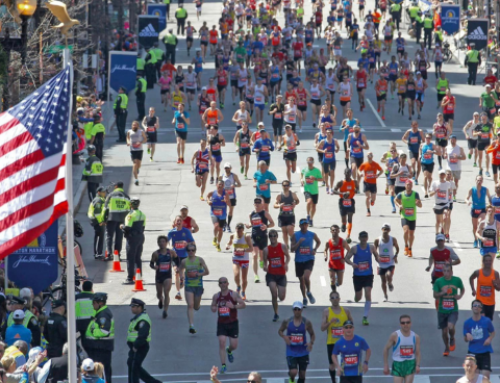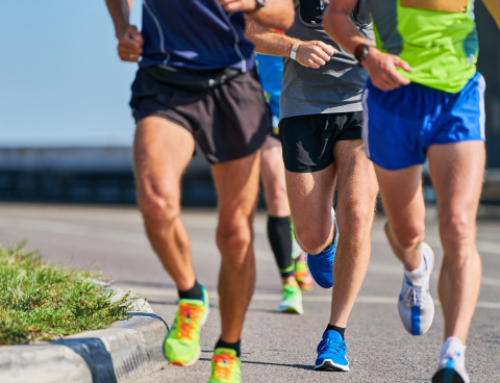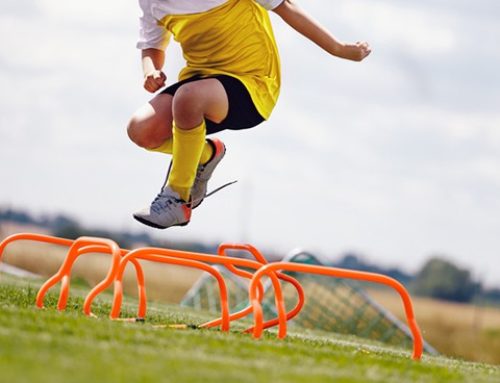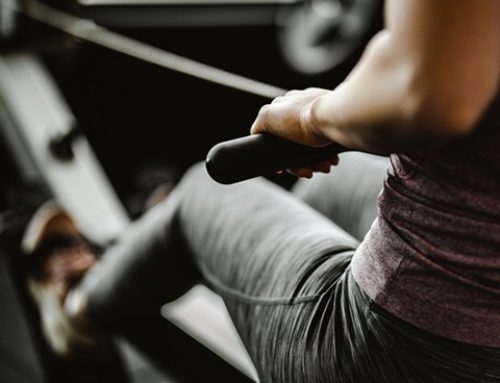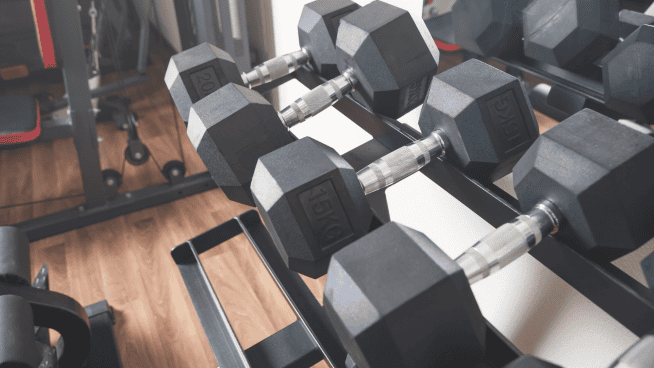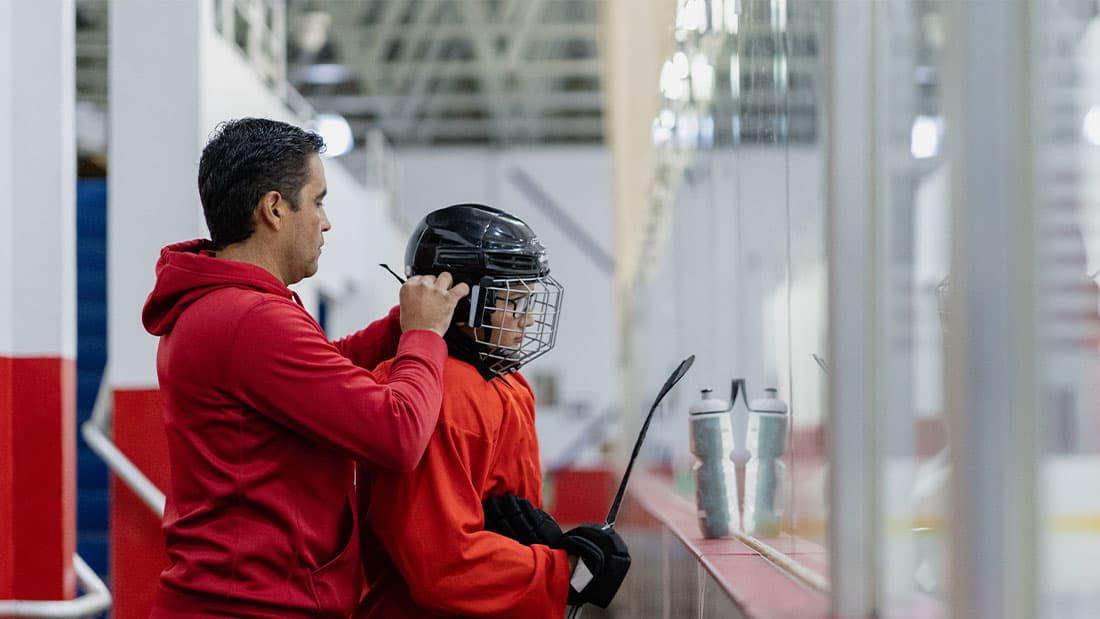Ditch the Sprints. Here’s How to Build True Sports Speed
Stop and think: How many times have you had to run sprints in practice to improve your speed? Now ask yourself: How many times have you run a straight line sprint during a game?
At Chip Smith Performance Systems, we train athletes to make it to the pros. Do we know how to help athletes run faster? Absolutely. That’s why guys have been coming to us for decades, and more than 1,500 of our athletes have played in the NFL.
But what keeps athletes coming back after they’ve signed big contracts is our focus on reactive, sports and position speed. Basically, we make athletes faster at performing the moves they actually perform on the field. And in every sport—from football to foosball—speed kills.
True Sports Speed
True sports speed is explosive reaction speed. You see or hear something, your brain processes it, and—BAM!—you’re moving. We help athletes develop that for their sport through a system we call M.O.R.R., which stands for Movement, Overspeed, Resistance and Reaction. The M.O.R.R. System uses a line of equipment I invented to isolate sport movements and apply resistance. It also includes techniques that train the brain to respond quickly to audible and visual cues, like it must do in game situations.
M.O.R.R. can be applied to nearly any activity—I’ve personally used it with pros and Olympians from gymnastics to badminton to table tennis—but for an example of how we put the method to work, let’s look at one of our favorite clients, perennial Pro Bowl defensive end Jared Allen.
Jared is one of the many guys who have trained with CSPS throughout his entire career. As a D-End, he must perform explosive and violent movements—like the rip, swim and sweep techniques getting off the ball. By isolating those movements, then repeating them with overspeed, resistance and reaction drills, we make him faster at what he does on Sundays.
This year, since Jared was a free agent during much of the off-season and his family was expecting a new baby, he asked my sons Tripp and Zach and me to take turns coming to Phoenix so he could train close to home. We said yes, of course. For us, Jared is family.
We started in April, when Zach and I took turns flying to Phoenix. Jared wanted to work on making his first step more explosive and increasing his hand speed—smart choices, since the battle in the trenches is often won by the first man to get his hands on the other. Here’s how M.O.R.R. helps Jared win those battles—and how the method can help athletes from any sport get better.
RELATED: 4 Drills Guaranteed to Increase Your Speed
I. Movement
Every session starts with a dynamic warm-up, a series of bounds, hops, skips and runs that warm up the core and get the body flexible and ready to train. Beginning with a gradual progression of dynamic movements like Jogging, Knee-Lifts and Butt Kicks (shown here), it progresses to ballistic stretches (such as Walking Groin Lunges), then moves on to Flex Runs, Skipping, and multi-directional movements like Ladder Drills.
II. Overspeed
Overspeed training is like resistance training in reverse. Whereas running against resistance (supplied by a parachute or a partner holding a band) helps you develop strength, overspeed training forces you to move faster than you otherwise could. It teaches your brain to process movement more rapidly. You should not be assisted so much that it affects your normal mechanics for the movement. You want to do the same thing you do in games, only faster, thanks to the help.
III. Resistance
Based on our description of overspeed, you can probably guess how resistance works: somebody tries to hold you back as you move. We apply resistance to the most fundamental movements an athlete makes, such as the punch Jared needs to deliver to opposing linemen. Resistance bands tied to his waist and wrists help Jared improve his hand speed and strengthen the blows he is able to deliver. Sets and reps are done explosively (as hard and as fast as possible) for 15 to 30 seconds.
RELATED: Terrell Owens Resistance Band Workout
IV. Reaction
Reaction drills are all about teaching the brain to process what you see and deliver signals to move to your body in the shortest time possible. To prepare an athlete to respond in a sport, we train his muscles to fire sooner and more explosively. Reaction drills can incorporate resistive or assistive techniques, but they must always involve audio or visual cues, and they must be repeated daily to achieve results.
In the drill above (for which we also employed resistive bands), Jared responds to a coach who is simulating a running back choosing the inside or outside hole to attack. Jared reacts by mimicking the Lateral Shuffle he would perform on the field when closing the hole and taking on a smaller, quicker and more agile running back in the backfield. Notice that Jared’s eyes are focused on the belt buckle of the running back, which facilitates the proper tackling technique he would use on the field.
RELATED: 3 Ways to Increase Reaction Time
RECOMMENDED FOR YOU
MOST POPULAR
Ditch the Sprints. Here’s How to Build True Sports Speed
Stop and think: How many times have you had to run sprints in practice to improve your speed? Now ask yourself: How many times have you run a straight line sprint during a game?
At Chip Smith Performance Systems, we train athletes to make it to the pros. Do we know how to help athletes run faster? Absolutely. That’s why guys have been coming to us for decades, and more than 1,500 of our athletes have played in the NFL.
But what keeps athletes coming back after they’ve signed big contracts is our focus on reactive, sports and position speed. Basically, we make athletes faster at performing the moves they actually perform on the field. And in every sport—from football to foosball—speed kills.
True Sports Speed
True sports speed is explosive reaction speed. You see or hear something, your brain processes it, and—BAM!—you’re moving. We help athletes develop that for their sport through a system we call M.O.R.R., which stands for Movement, Overspeed, Resistance and Reaction. The M.O.R.R. System uses a line of equipment I invented to isolate sport movements and apply resistance. It also includes techniques that train the brain to respond quickly to audible and visual cues, like it must do in game situations.
M.O.R.R. can be applied to nearly any activity—I’ve personally used it with pros and Olympians from gymnastics to badminton to table tennis—but for an example of how we put the method to work, let’s look at one of our favorite clients, perennial Pro Bowl defensive end Jared Allen.
Jared is one of the many guys who have trained with CSPS throughout his entire career. As a D-End, he must perform explosive and violent movements—like the rip, swim and sweep techniques getting off the ball. By isolating those movements, then repeating them with overspeed, resistance and reaction drills, we make him faster at what he does on Sundays.
This year, since Jared was a free agent during much of the off-season and his family was expecting a new baby, he asked my sons Tripp and Zach and me to take turns coming to Phoenix so he could train close to home. We said yes, of course. For us, Jared is family.
We started in April, when Zach and I took turns flying to Phoenix. Jared wanted to work on making his first step more explosive and increasing his hand speed—smart choices, since the battle in the trenches is often won by the first man to get his hands on the other. Here’s how M.O.R.R. helps Jared win those battles—and how the method can help athletes from any sport get better.
RELATED: 4 Drills Guaranteed to Increase Your Speed
I. Movement
Every session starts with a dynamic warm-up, a series of bounds, hops, skips and runs that warm up the core and get the body flexible and ready to train. Beginning with a gradual progression of dynamic movements like Jogging, Knee-Lifts and Butt Kicks (shown here), it progresses to ballistic stretches (such as Walking Groin Lunges), then moves on to Flex Runs, Skipping, and multi-directional movements like Ladder Drills.
II. Overspeed
Overspeed training is like resistance training in reverse. Whereas running against resistance (supplied by a parachute or a partner holding a band) helps you develop strength, overspeed training forces you to move faster than you otherwise could. It teaches your brain to process movement more rapidly. You should not be assisted so much that it affects your normal mechanics for the movement. You want to do the same thing you do in games, only faster, thanks to the help.
III. Resistance
Based on our description of overspeed, you can probably guess how resistance works: somebody tries to hold you back as you move. We apply resistance to the most fundamental movements an athlete makes, such as the punch Jared needs to deliver to opposing linemen. Resistance bands tied to his waist and wrists help Jared improve his hand speed and strengthen the blows he is able to deliver. Sets and reps are done explosively (as hard and as fast as possible) for 15 to 30 seconds.
RELATED: Terrell Owens Resistance Band Workout
IV. Reaction
Reaction drills are all about teaching the brain to process what you see and deliver signals to move to your body in the shortest time possible. To prepare an athlete to respond in a sport, we train his muscles to fire sooner and more explosively. Reaction drills can incorporate resistive or assistive techniques, but they must always involve audio or visual cues, and they must be repeated daily to achieve results.
In the drill above (for which we also employed resistive bands), Jared responds to a coach who is simulating a running back choosing the inside or outside hole to attack. Jared reacts by mimicking the Lateral Shuffle he would perform on the field when closing the hole and taking on a smaller, quicker and more agile running back in the backfield. Notice that Jared’s eyes are focused on the belt buckle of the running back, which facilitates the proper tackling technique he would use on the field.
RELATED: 3 Ways to Increase Reaction Time





